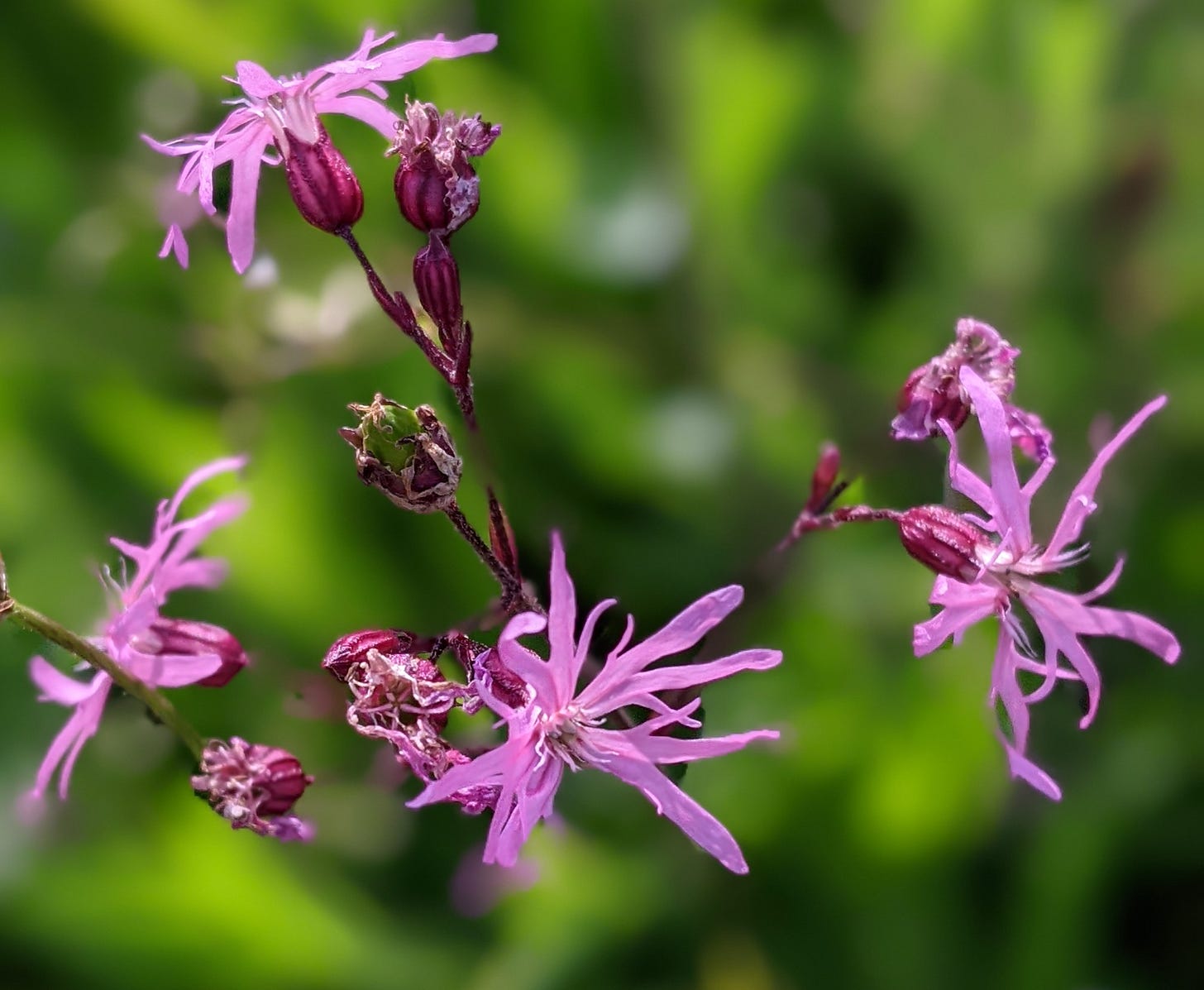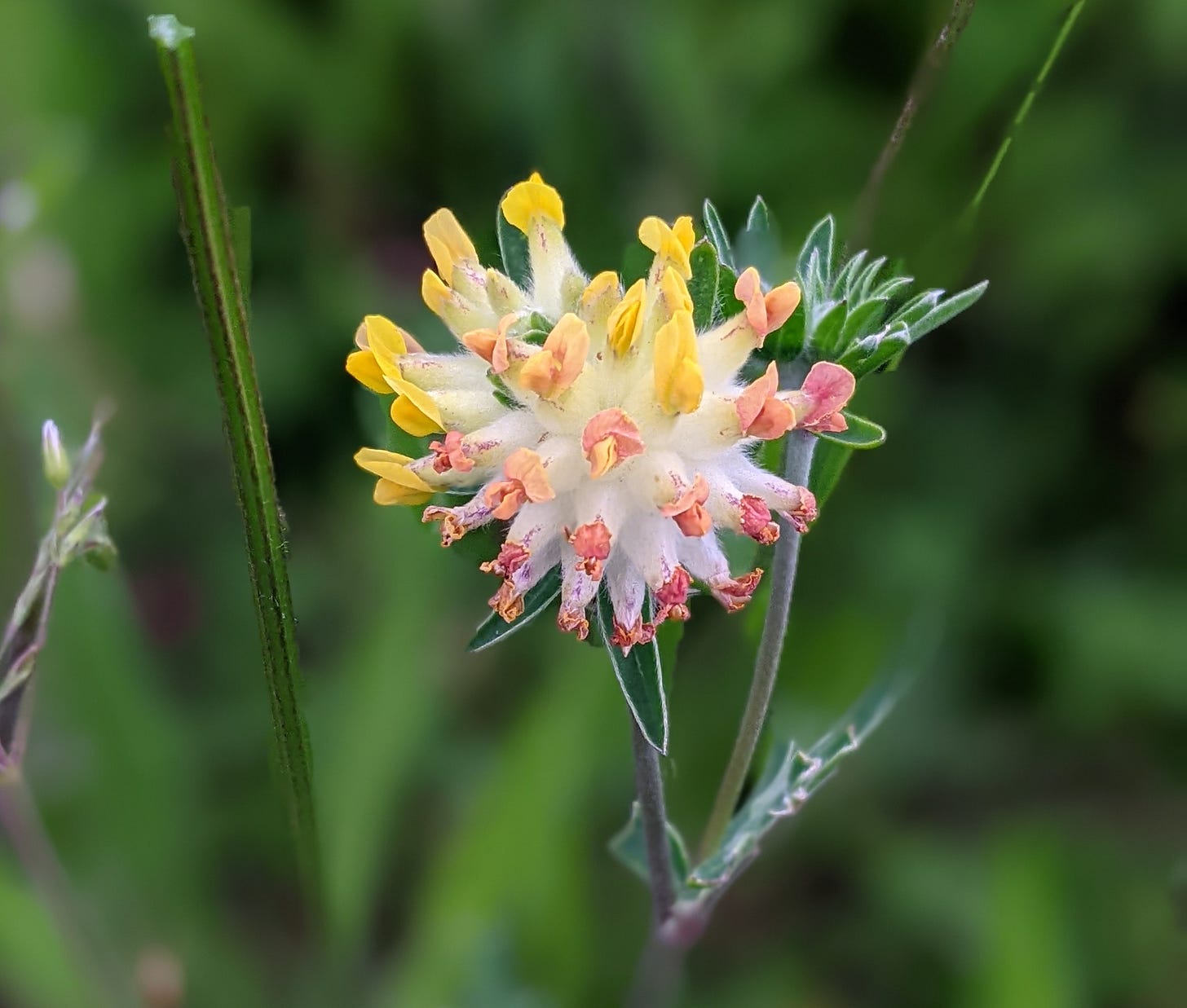Why I'm wild about wildflowers
A peek at my new hobby, and why we all need to care about these delicate natural beauties
LAST YEAR I turned fifty, and for my birthday present, my wife gave me a wildflower meadow. To be clear – she didn’t buy some more land, but instead arranged for half-an-acre of our field to be ploughed and sown with wildflower seeds. It was the best present I have been given, as it brings me so much joy.
Although they have been around me all my life, I only started to notice wildflowers about a couple of years ago. Along with taking up running, perhaps it’s indicative of a midlife crisis, but if it is, then it’s a wholesome manifestation.
Since then, I have tried to identify a new wildflower every day. At first, it was more of an intellectual exercise, to keep the grey cells active by learning a completely alien topic, but within just a few days, I’m not ashamed to admit that I really fell for them.
Why is this?
The first reason is undoubtedly their beauty and sheer variety. From the delicate pale violet cluster of a field scabious, to the tiny purple and yellow star of the bittersweet nightshade, and the small lampshade-like harebell, wildflowers really do make you marvel at the artistry of nature.
And then there are names, which are gloriously evocative, and conjure up centuries of history. What other pastime can see you become immersed in lady’s bedstraw, Queen Anne’s lace, bloody cranesbill, toadflax, agrimony, or the charmingly cheeky common nipplewort? And let’s not forget my favourite name – the annual bastard cabbage.
Each one of these names can tell a tale, make reference to almost-forgotten folklore and history, and give clues as to ancient medicinal uses. Because wildflowers are not just occasional patches of colour you may vaguely notice when you walk the dog, but small totems that reveal so much about our island story, and without them we would be impoverished.
As I live in deepest rural Wiltshire, I am lucky enough to be surrounded by wildflowers for many months of the year. However, for most, they are rarities, and that is a tragedy, both for the environment and our history.
The decline is shocking. Since the 1930s, a staggering 97 percent of wildflower meadows have been lost, either to development or agriculture. That represents 7.5 million acres, which is about ten times the size of the average county. Today, grasslands rich in wildflowers now only cover 1% of the entire country. More alarmingly still, about 12 percent of the country’s wildflowers and plants are at risk of extinction.
Therefore, a hundred years ago, wildflowers were a regular part of nearly everybody’s life, and our grandparents and their parents would have grown up knowing the names of many, and indeed their uses. Today, I doubt that very few know more than about six wildflowers.
However, it does seem that the tide against wildflowers is slowly turning, with more of us becoming aware of how we can act both individually and collectively to encourage their growth.
Of course, the simplest thing any of us can do is to plant wildflowers in our own gardens, and there are plenty of wildflower mixes available online and at every garden centre. But what will make a bigger difference is whether landowners can dedicate fields to becoming wildflower meadows, and if local authorities can cut roadside verges as little as possible.
One charity that is spearheading a campaign to bring this about is Plantlife, which wants to restore some 300,000 acres of grassland by 2043, and to convince those who manage some 310,000 miles of Britain’s roads not to cut their verges quite so early in the season, and also to cut them less. As some seven hundred species of wild flowers grow alongside the roads, this would clearly have a huge impact, and would also help bees, butterflies and other insects.
If Plantlife is successful, then it will mean that many more of us will be exposed to wildflowers, and will get to learn about them. The most obvious way to go about doing that is to buy a book about wildflowers, but there are now also many apps available. Having tried a few, I have now settled on Plantnet, which works absolutely brilliantly. You simply take a picture of a wildflower, upload it to the app, and it almost magically identifies it. You can also check whether the identification is correct by looking at other picture for comparison. The app also identifies leaves, bark, and fruits, although I have yet to give these a try.
The only drawback to using such an app is to deny oneself the pleasures of leafing through a book about wildflowers as you search for the one you have just seen. It is very easy to find yourself fascinated by the origins of the names of our wildflowers, and in doing so, you will learn more than just about flowers.
Take St John’s wort, which grows in abundance near me. Many are aware of its medicinal properties – although scientists are still somewhat sceptical – and how it might help fight depression. However, few would know the origins of its name, which refers to the practice of hanging the plant over the doors of homes and animal stalls on the Feast Day of St John in order to ward off evil spirits.
Then there is another of my ‘discoveries’, Lady’s bedstraw, which is the type of wildflower that goes almost unnoticed, with its minuscule yellow flowers forming an indistinct foamy mass. Those who tune into the Archers will know it as having once been voted the ‘County Flower of Borsetshire’, although its associations are far more ancient. In one medieval legend, the Virgin Mary gave birth to Jesus while lying on lady’s bedstraw, a notion undoubtedly rooted in the fact that the plant really was used to stuff bedding, because it is both soft and smells pleasantly of hay.
Every wildflower I have found has, at one time, been used as a medicine. One of my new favourite books is the comprehensive Theatrum Botanicum which was published by the famous botanist John Parkinson in 1640. Easily available as a facsimile online, this extraordinary 1800-page tome is truly a masterpiece.
In it, I have learned all sorts, including the properties of a wildflower I would have dismissed as a mere weed a month ago – green alkanet. With its small blue flowers and large green leaves, its roots seem to have been thought particularly effective at healing wounds. Parkinson reports that two ounces of the roots, mixed with twenty boiled earthworms, and then infused in oil, is particularly good at consolidating and knitting nerves and sinews back together. It is perhaps best not to try this one at home.
In fact, the roots could be better used as a red dye, which is why the plant was originally brought into this country by monasteries, which needed the roots to dye ecclesiastical cloth.
Many of the wildflowers I have found were also associated with most non-monastic pursuits. One of my favourites is agrimony, which looks like a yellow pipe cleaner. Perhaps because of its shape, the Anglo-Saxons would boil the plant in milk, and use it to increase erectile performance.
I have yet to find any blue mallow near where I live, but while staying with a herbalist friend in Essex, I saw a lot of it about. According to Pliny, the seeds of the mallow simply require sprinkling over one’s genitalia to strengthen sexual desire ‘to an infinite degree’. Similar properties were also identified by the Iroquois in North America, who would vomit up mallow to give the same effect as that described by Pliny. Hardly the best start to date night.
Although I am never going to use any of the plants I find as medicines, I am certainly going to eat them. The one that tempts me the most is cushion calamint – which really does look like a cushion – but it also known as wild basil, and can be used just like the basil you would find in the shops. It is also apparently good to make an aromatic and sweet herbal tea.
Of course, I know that I have barely started my new hobby, and I have all the zeal of keen beginner. But I am sure that it is going to last, and it is of course my hope that my fiftieth birthday present will long outlive me.








I've been using an app for the last 2 years to identify the wild flowers when out walking in Wiltshire. It must definitely be an age thing ! At this time of year I really look forward to the wild orchids coming into flower. Parsonage Down over by Shrewton is a hot spot for them (I wrote about them here: https://www.hiddenwiltshire.com/post/parsonage-down-and-the-summer-orchids) but I also see them in my local hills around Westbury and Warminster. I've also given parts of my garden over to wild flowers, which helps support my general indifference towards mowing the lawn.
Fabulous post Guy. Thank you for bringing the beautiful & understated blooms to our attention. That has to be the best ever birthday present! Well done Annabel!